Taking Advantage of Sea Creatures Behaviours: An Interview with William Tan
Professional underwater photographer William Tan has over 20 years of underwater photography experience. We speak to him to find out what are some of the most intriguing sea creature behaviours he has encountered, and how to photograph them in their truest form.
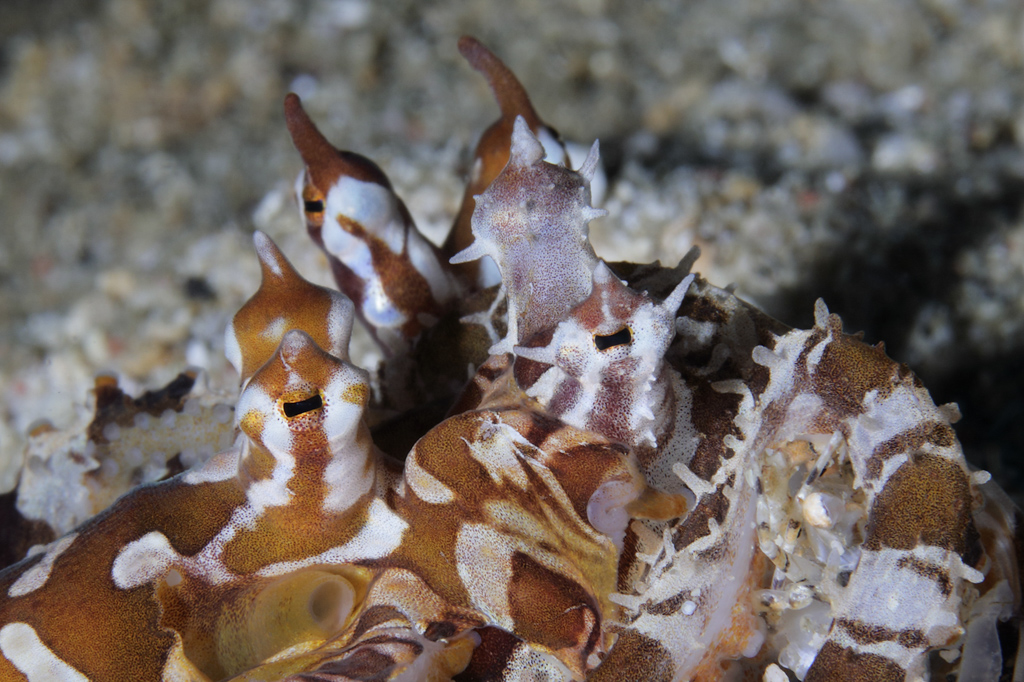
EOS-1D X Mark II, EF100mm f/2.8L Macro USM lens, f/18, 100mm, 1/250sec, ISO100 Wunderpus fighting for mating rights. Photography by William Tan.
You have come across numerous sea creatures on your dive trips. What were some of the most unique behaviours you have witnessed?
After photographing marine life for more than 20 years, it was most amusing to see a Coleman Shrimp (Periclimenes colemani) in Anilao, Philippines, pulling off a venomous spine from its Fire Urchin (Asthenosoma varium) host and using it to jab at my camera.
In Esperance, Western Australia, the overgrown and playful Australian sea lion pups kept tugging constantly at my hood, causing chilly 20-degree water to enter my wetsuit.
And witnessing 2 male wonderpus octopi (Wunderpus photogenicus) had the fight of their lives over mating rights of a larger female in Lombok, Indonesia.
How do you use these behaviours to your advantage?
While a fast camera body and lens would certainly help in capturing behavioural shots, it is still possible to get beautiful images with all levels of cameras when you have a good understanding of animal behaviours. Instead of chasing after your subjects, you really want to think ahead, so you can be pointing your camera at actions that are about to happen.
Because of its swimming speed, many photographers choose to capture (with their hands!) the beautiful Paper Nautilus (Argonauta sp.) and have it placed in front of their cameras, not knowing that this would cause a special membrane at the tip of its two tentacles used normally to cover its shell when retracting, resulting in a dull naked shell in the final images. When photographing Paper Nautilus, allow the animal to swim. After several bursts, it would usually take a brief rest. This is when you move in to get your shots. Do not use a strong target light, as it would also cause the animal to turn pale white.
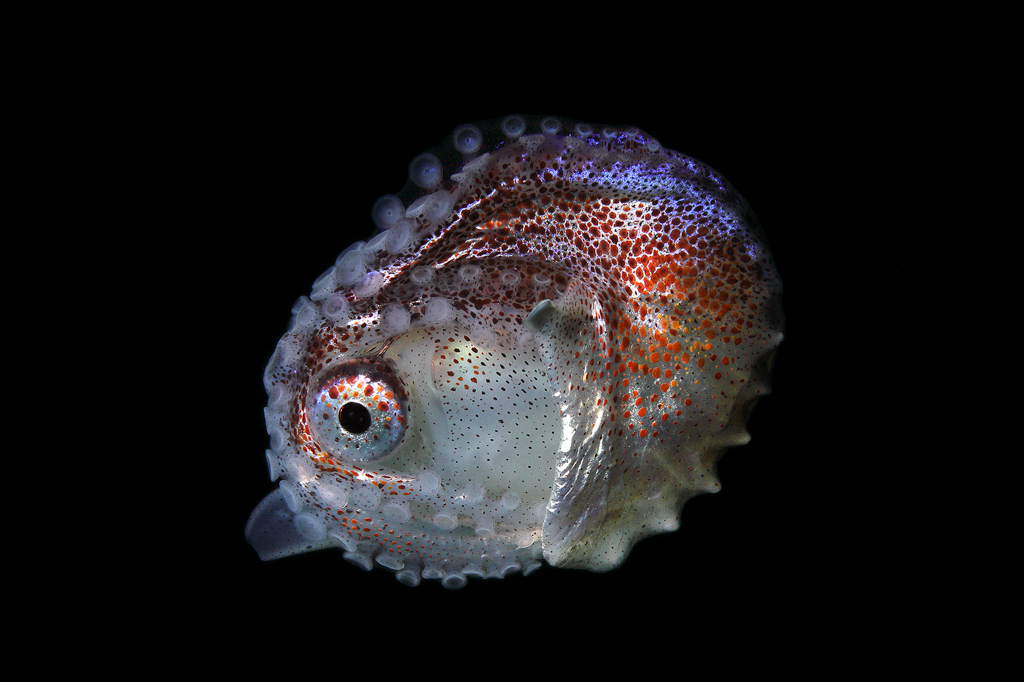
EOS 5D Mark IV, EF100mm f/2.8L Macro IS USM lens, f/14, 100mm, 1/250sec, ISO100
An undisturbed female Paper Nautilus showing saturated colour pigments and with its membrane covering the entire shell. Photograph by Steven Ko (Taiwan).
Siphonophore is a colony of organisms, normally long in length when at a relaxed “hunting” state, but contracts when it detects the slightest water movement. We found this Siphonophore at its contracted state and spent quite some time shooting it “dancing” about in the dark. When it started to relax and slowly extended in length, we left it undisturbed and went looking for other subjects.
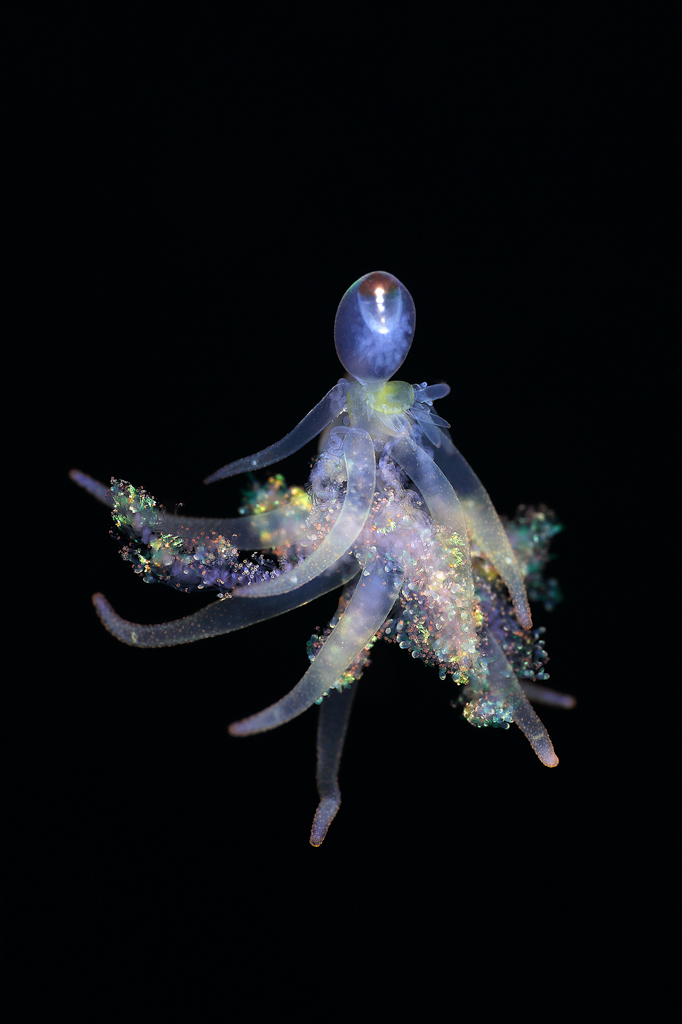
EOS 5D Mark IV, EF100mm f/2.8L Macro IS USM lens, f/13, 100mm, 1/250sec, ISO100
A "dancing" Siphonophore. Photograph by Steven Ko (Taiwan).
The Threadfin Reefgoby (Priolepis nuchifasciata) is a nightmare to photograph. However, like all gobies, it also has several favourite places where it feels comfortable resting and would stay still for a period of time. Instead of chasing it all over the reef, it is best to photograph this fish in these places where it is most confident.
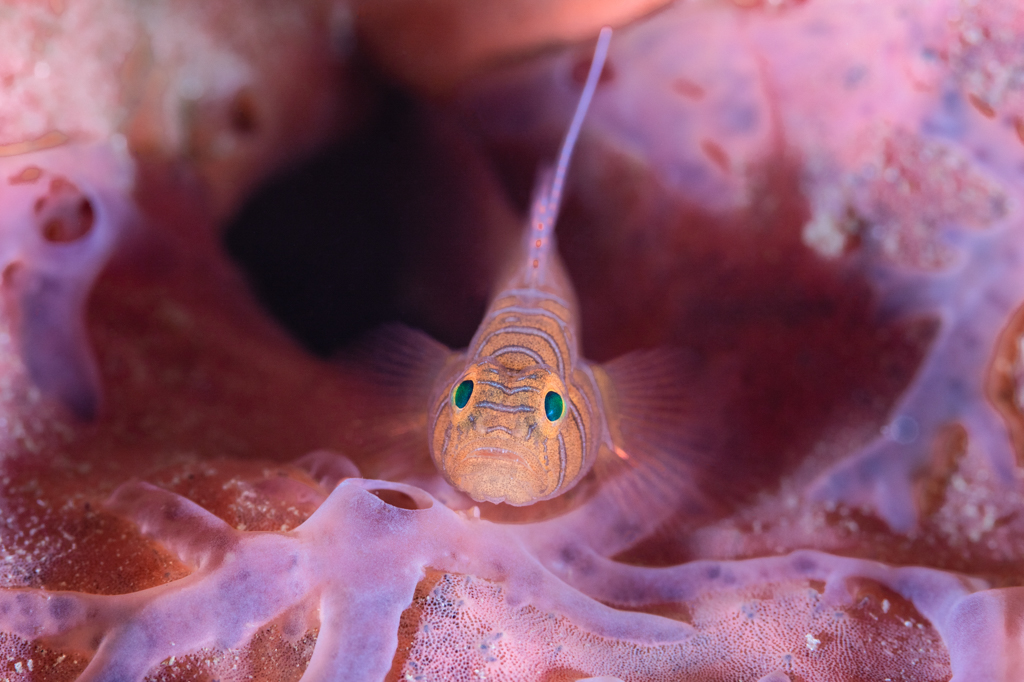
EOS 5D Mark IV, EF100mm f/2.8L Macro IS USM lens, f/9.0, 100mm, 1/250sec, ISO100
A confident Threadfin Reef Goby. Photograph by Lilian Koh (Singapore).
Coconut Octopus (Amphioctopus marginatus) is the only species of Cephalopod that would bury empty shells in sand, and then dig them up and hide in them when feeling threatened. Because they are such curious creatures, there is no need to pry open these shells for a photograph. The octopus would peek at your camera from within the shells from time to time.
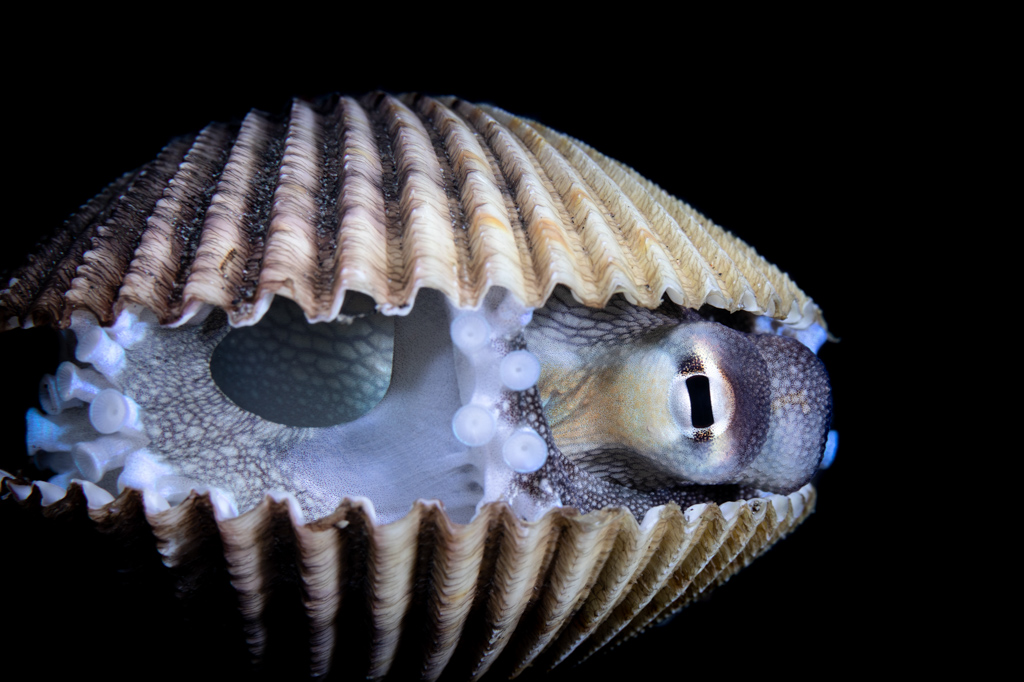
EOS 5D Mark IV, EF100mm f/2.8L Macro IS USM lens, f/13, 100mm, 1/250sec, ISO100
The Coconut Octopus is the only species of Cephalopod interested in shells. Photograph by Lilian Koh (Singapore).
What are some of the common rules that an underwater photographer should abide to?
Be true to science. Don’t be that awful photographer who comes up with all kinds of manipulations, and when questioned, claim it a “newly discovered” behavioural pattern.
What should one do when one chance upon a sea creature with erratic behaviours? Should one stay to observe, or take certain safety precautions?
I was in South Maldives photographing Tiger Sharks (Galeocerdo cuvier). Although they do come close, they would always turn away at a safe distance from the camera. One day, we had one that decided otherwise. I was shocked to see it coming slowly but surely towards the camera, and eventually hit onto my camera port. Involuntarily, I pushed it back with my camera. Because of the shark was over 4 metres long, it did not move back from my push but instead, I did! I then saw it swam calmly past me. This certainly wasn’t a life-and-death situation, as those sharks went on their business as if I wasn’t there, and they were not the least bit interested in me. But with creatures the size that can cause potential harm, it is best to leave water when things get rowdy.

EOS-1D X Mark II, EF16-35mm f/2.8L III USM lens, f/10, 16mm, 1/320sec, ISO160
Tiger Shark coming too close to camera. Photograph by William Tan.
Inspired to go for an underwater photography experience? Read up on these 5 Things to Note When Composing Your Shots Underwater before you embark on your journey. Lighting is important in underwater photography, which is why it is good to learn How to Create Proper Lighting for Your Underwater Shots. See what the EOS-1D X Mark II camera (used by William Tan) can do underwater in The Giant of Professional Flagship Cameras.
Receive the latest update on photography news, tips and tricks.
Be part of the SNAPSHOT Community.
Sign Up Now!




































